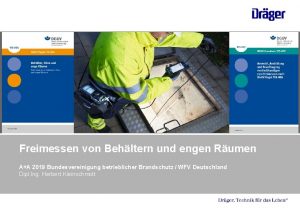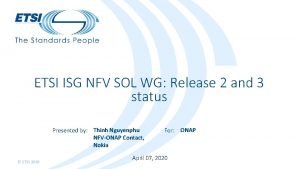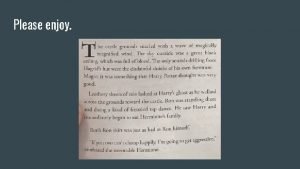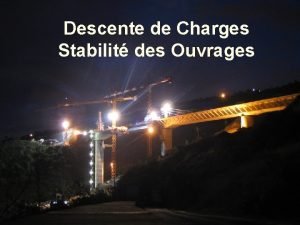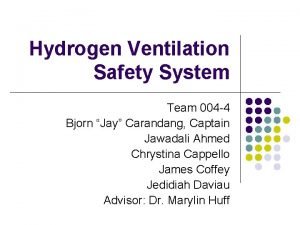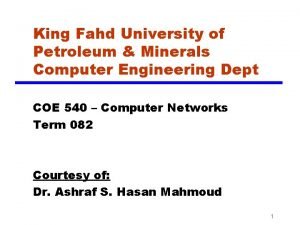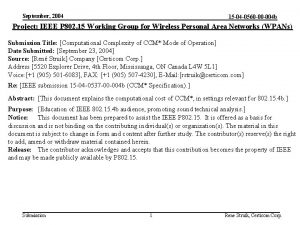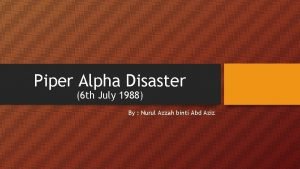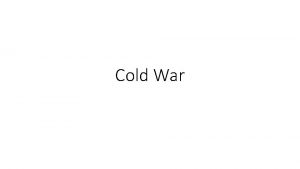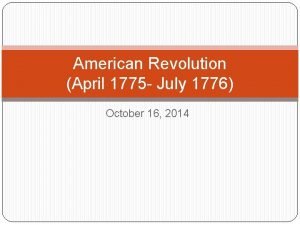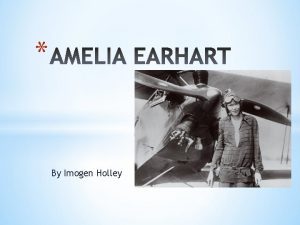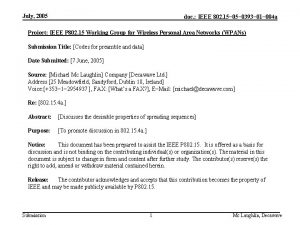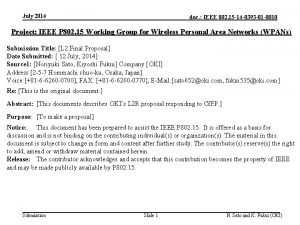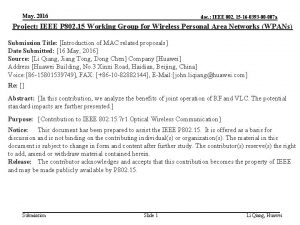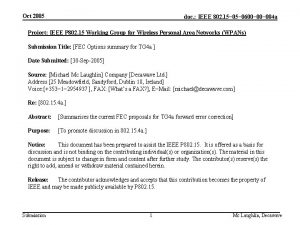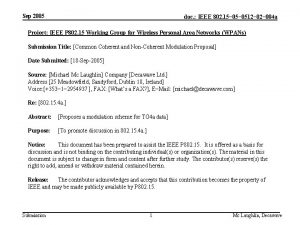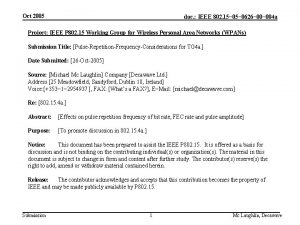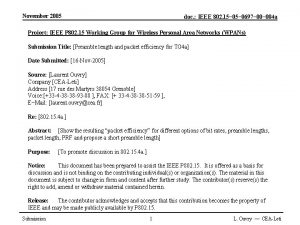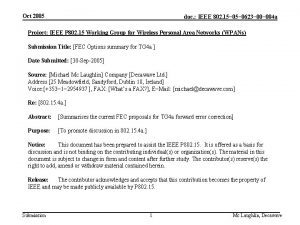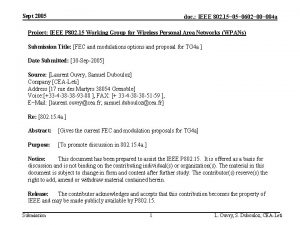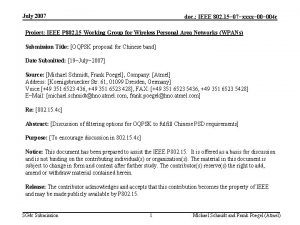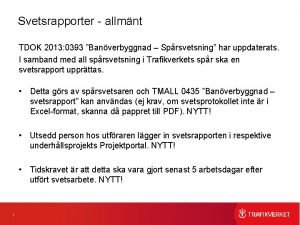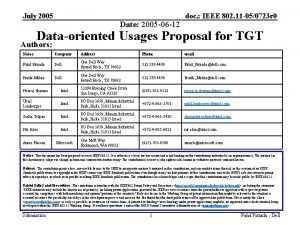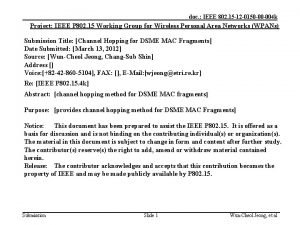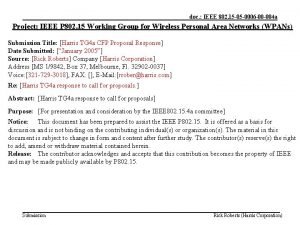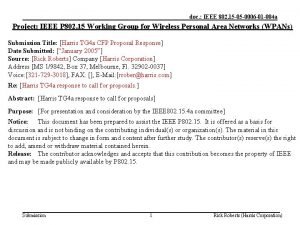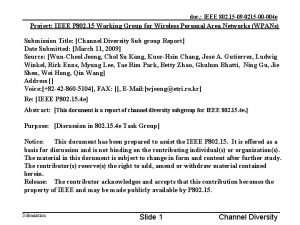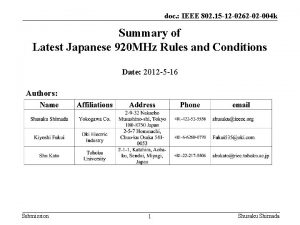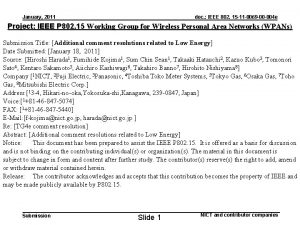July 2005 doc IEEE 802 15 0393 004






































![July, 2005 doc. : IEEE 802. 15− 0393− 004 a References • [Ipatov] V. July, 2005 doc. : IEEE 802. 15− 0393− 004 a References • [Ipatov] V.](https://slidetodoc.com/presentation_image_h/e7cbf0f7c8be01163a5ea8913c0f251b/image-39.jpg)
- Slides: 39

July, 2005 doc. : IEEE 802. 15− 0393− 004 a Project: IEEE P 802. 15 Working Group for Wireless Personal Area Networks (WPANs) Submission Title: [Codes for preamble and data] Date Submitted: [7 June, 2005] Source: [Michael Mc Laughlin] Company [Decawave Ltd. ] Address [25 Meadowfield, Sandyford, Dublin 18, Ireland] Voice: [+353− 1− 2954937 ], FAX: [What’s a FAX? ], E−Mail: [michael@decawave. com] Re: [802. 15. 4 a. ] Abstract: [Discusses the desirable properties of spreading sequences] Purpose: [To promote discussion in 802. 15. 4 a. ] Notice: This document has been prepared to assist the IEEE P 802. 15. It is offered as a basis for discussion and is not binding on the contributing individual(s) or organization(s). The material in this document is subject to change in form and content after further study. The contributor(s) reserve(s) the right to add, amend or withdraw material contained herein. Release: The contributor acknowledges and accepts that this contribution becomes the property of IEEE and may be made publicly available by P 802. 15. Submission 1 Mc Laughlin, Decawave

July, 2005 doc. : IEEE 802. 15− 0393− 004 a Spreading sequences: Desirable properties Submission 2 Mc Laughlin, Decawave

July, 2005 doc. : IEEE 802. 15− 0393− 004 a Five KEY properties • Sequence Length • Pulse Repetition Frequency • Autocorrelation properties – Periodic autocorrelation (Channel sounding) – Aperiodic autocorrelation (Data mode) • Spectral peak to average ratio (SPAR) – FCC requirements • Temporal peak to average ratio (TPAR) – Power supply requirements Submission 3 Mc Laughlin, Decawave

July, 2005 doc. : IEEE 802. 15− 0393− 004 a Periodic Autocorrelation (1) • For channel sounding, a repeated sequence is appropriate. – Periodic autocorrelation function is the important property for a channel sounding sequence • Ipatov ternary sequences have “perfect” periodic autocorrelation i. e. all side lobes are zero • PBTS codes (from WBA/I 2 R) also have perfect” periodic autocorrelation • m−sequences have “ideal” periodic autocorrelation, i. e. their autocorrelation function is N (the sequence length) at one sample period and − 1 everywhere else. Submission 4 Mc Laughlin, Decawave

July, 2005 doc. : IEEE 802. 15− 0393− 004 a Periodic Autocorrelation (2) • This means that the output of a correlator operating on repeated Ipatov Transmitted sequences is EXACTLY, the channel impulse repeated, plus noise. • The output of a correlator operating on a repeated m−sequence is CLOSE TO the channel impulse response + noise. Submission 5 Mc Laughlin, Decawave

July, 2005 doc. : IEEE 802. 15− 0393− 004 a Example Correlator Outputs Submission 6 Mc Laughlin, Decawave

July, 2005 doc. : IEEE 802. 15− 0393− 004 a Aperiodic Autocorrelation • For transmitting data, aperiodic autocorrelation function (AACF) is appropriate. – Previous and next sequences may not be the same. – Good AACF means low ISI – Golay Merit Factor (GMF) is a common measure of goodness of AACF. (Golay 1977) Submission 7 Mc Laughlin, Decawave

July, 2005 doc. : IEEE 802. 15− 0393− 004 a Golay Merit Factor • • • GMF is defined as where ac is the aperiodic auto correlation function of a length n sequence The average GMF of binary sequences is 1. 0 Best known GMF for binary sequences is 14. 08 for the Barker 13 sequence, next is 12. 1 for the Barker 11 sequence. The mean Golay merit factor of the length 32 Walsh. Hadamard matrix is 0. 194. GMF greater than 6 is rare Submission 8 Mc Laughlin, Decawave

July, 2005 doc. : IEEE 802. 15− 0393− 004 a Autocorrelation: High GMF Submission 9 Mc Laughlin, Decawave

July, 2005 doc. : IEEE 802. 15− 0393− 004 a Autocorrelation: Low GMF Submission 10 Mc Laughlin, Decawave

July, 2005 doc. : IEEE 802. 15− 0393− 004 a Matched Filter Output – High GMF Submission 11 Mc Laughlin, Decawave

July, 2005 doc. : IEEE 802. 15− 0393− 004 a Matched Filter Output – Low GMF Submission 12 Mc Laughlin, Decawave

July, 2005 doc. : IEEE 802. 15− 0393− 004 a Spectral Peak to Average ratio (SPAR) • In absence of ITU recommendations, use the FCC requirements. • Spectrum measured in 1 MHz frequency bins for 1 ms intervals. • Need Low SPAR. • SPAR in d. Bs converts to power backoff required. Submission 13 Mc Laughlin, Decawave

July, 2005 doc. : IEEE 802. 15− 0393− 004 a Temporal Peak to Average Ratio • Need low TPAR, otherwise need high voltage power supply. • Best GMF (Infinite) is a single impulse. • Impulse has 0 d. B SPAR • TPAR of Impulse is worst • Need to balance sequence length and PRF to get a good SPAR and a good TPAR. Submission 14 Mc Laughlin, Decawave

July, 2005 doc. : IEEE 802. 15− 0393− 004 a Example sequences • One of the Ipatov length 57 sequences: − 0+0−− 0−−−+−+−+++++−−+++−++0++−+−− 0−+++− 00−−++++ – • GMF is 3. 75 A Length 63 m sequence: −−−−−−+−+−+−−+−−−+−−+−++−++−−−+++−+−−−−++−+−+++−−+++++ – GMF is 3. 52 • Both of these sequences, if transmitted repeatedly back to back, have a flat spectrum • Ipatov sequences are available at the following lengths: 7, 13, 21, 31, 57, 73, 91, 127, 133, 183, 273, 307, 381, 512, 553, 651, 75 7, 871, 993, 1057, 1407, 1723 Submission 15 Mc Laughlin, Decawave

July, 2005 doc. : IEEE 802. 15− 0393− 004 a Sequence length and PRF • If sequence is repeated, spectral lines spaced at the 1/sequence length apart. • Want these to be < ~ 2 MHz apart for FCC compliance and low SPAR • Needs to be longer than Channel Impulse Response – e. g. CM 8 has significant energy to ~850 ns. • For a 1000 ns duration sequence, a length 553 sequence requires ~10 times lower TPAR than length 57, but ~10 times larger PRF. Submission 16 Mc Laughlin, Decawave

July, 2005 doc. : IEEE 802. 15− 0393− 004 a TG 4 a CM 8 Magnitudes Submission 17 Mc Laughlin, Decawave

July, 2005 doc. : IEEE 802. 15− 0393− 004 a TG 4 a CM 6 Magnitudes Submission 18 Mc Laughlin, Decawave

July, 2005 doc. : IEEE 802. 15− 0393− 004 a Basic Difference sets for length 31 codes • Few zeros – Parameters L=31, k=6, λ=1 – Difference set =[1 5 11 24 25 27 ]; • Balanced zeros – Parameters L=31, k=15, λ=7 – Difference set =[1 2 3 4 6 8 12 15 16 17 23 24 27 29 30 ]; Submission 19 Mc Laughlin, Decawave

July, 2005 doc. : IEEE 802. 15− 0393− 004 a Auto correlation. Fewest zeros ipatov sequence Submission 20 Mc Laughlin, Decawave

July, 2005 doc. : IEEE 802. 15− 0393− 004 a Auto correlation. Balanced zero ipatov sequence Submission 21 Mc Laughlin, Decawave

July, 2005 doc. : IEEE 802. 15− 0393− 004 a Autocorrelation of magnitude. Balanced zero codes Submission 22 Mc Laughlin, Decawave

July, 2005 doc. : IEEE 802. 15− 0393− 004 a Autocorrelation of magnitude. Fewest zero codes Submission 23 Mc Laughlin, Decawave

July, 2005 doc. : IEEE 802. 15− 0393− 004 a Cross correlation of fewest zeros ipatov with modified magnitude sequence Cross correlation of 0 1 1 1 1 0 0 1 1 1 1 0 1 1 1 0 1 with -4 1 1 1 1 -4 -4 1 1 1 1 -4 1 1 1 -4 1 i. e. 0 replaced by -4 Submission 24 Mc Laughlin, Decawave

July, 2005 doc. : IEEE 802. 15− 0393− 004 a Cross correlation of balanced zeros ipatov with modified magnitude sequence Cross correlation of 0 0 1 1 0 1 0 0 0 1 1 1 0 0 1 1 1 0 0 with -1 -1 1 -1 -1 -1 1 1 -1 -1 i. e. 0 replaced by -1 Submission 25 Mc Laughlin, Decawave

July, 2005 doc. : IEEE 802. 15− 0393− 004 a 12 Length 31 codes Balanced Ipatov Sequences (BITS) *6 Combination of 6 codes with best cross correlation **3 Combination of 3 codes with best cross correlation Submission 26 Mc Laughlin, Decawave

July, 2005 doc. : IEEE 802. 15− 0393− 004 a Best 20 of Length 31 Fewest zero codes Submission 27 Mc Laughlin, Decawave

July, 2005 doc. : IEEE 802. 15− 0393− 004 a SPAR, L=31 balanced codes Lower is better Submission 28 Mc Laughlin, Decawave

July, 2005 doc. : IEEE 802. 15− 0393− 004 a Autocorrelation: Golay Merit Factor L=31 balanced codes Higher is better Submission 29 Mc Laughlin, Decawave

July, 2005 doc. : IEEE 802. 15− 0393− 004 a Cross Correlation Coherent cross-correlation matrix 16 6 4 4 6 16 6 4 4 4 6 6 16 6 6 4 6 16 6 4 4 4 6 6 16 Non-coherent cross-correlation matrix 16 4 4 4 6 4 4 16 6 4 4 6 16 4 4 4 16 4 6 6 4 4 4 16 4 4 6 4 16 Submission 30 Mc Laughlin, Decawave

July, 2005 doc. : IEEE 802. 15− 0393− 004 a Preamble PSD for BITS at 30. 875 MHz PRF Submission 31 Mc Laughlin, Decawave

July, 2005 doc. : IEEE 802. 15− 0393− 004 a Preamble Spectrum Analyzer Output BITS: 30. 875 MHz PRF Submission 32 Mc Laughlin, Decawave

July, 2005 doc. : IEEE 802. 15− 0393− 004 a SPAR vs Data mode PSD BITS: - Codeword No. 10 : SPAR = 3. 26 d. B Submission 33 Mc Laughlin, Decawave

July, 2005 doc. : IEEE 802. 15− 0393− 004 a SPAR vs Data mode Spectrum BITS: - Codeword No. 10 : SPAR = 3. 26 d. B Submission 34 Mc Laughlin, Decawave

July, 2005 doc. : IEEE 802. 15− 0393− 004 a Aperiodic PSD – 30. 85 MHz PRF Codeword No. 10 : SPAR = 3. 26 d. B Submission 35 Mc Laughlin, Decawave

July, 2005 doc. : IEEE 802. 15− 0393− 004 a Aperiodic PSD – 15. 4 MHz PRF Codeword No. 10 : SPAR = 3. 26 d. B Submission 36 Mc Laughlin, Decawave

July, 2005 doc. : IEEE 802. 15− 0393− 004 a Using one of these codes for data bi-1 = 0, bi = 0 bi-1 = 0, bi = 1 bi-1 = 1, bi = 0 bi-1 = 1, bi = 1 Submission 37 Mc Laughlin, Decawave

July, 2005 doc. : IEEE 802. 15− 0393− 004 a Conclusion • 2 Recommendations – Use periodic BITS codes at 30. 875 MHz PRF for Preamble – Use BPSK BITS codes at variable PRF for Data Transmission Submission 38 Mc Laughlin, Decawave
![July 2005 doc IEEE 802 15 0393 004 a References Ipatov V July, 2005 doc. : IEEE 802. 15− 0393− 004 a References • [Ipatov] V.](https://slidetodoc.com/presentation_image_h/e7cbf0f7c8be01163a5ea8913c0f251b/image-39.jpg)
July, 2005 doc. : IEEE 802. 15− 0393− 004 a References • [Ipatov] V. P. Ipatov, “Ternary sequences with ideal autocorrelation properties” Radio Eng. Electron. Phys. , vol. 24, pp. 75− 79, Oct. 1979. • [Høholdt et al] Tom Høholdt and Jørn Justesen, “Ternary sequences with Perfect Periodic Autocorrelation”, IEEE Transactions on information theory. Submission 39 Mc Laughlin, Decawave
 Bridges from 802.x to 802.y
Bridges from 802.x to 802.y Bridges from 802.x to 802.y
Bridges from 802.x to 802.y Ieee 802 standard
Ieee 802 standard 802 15
802 15 802 ieee
802 ieee Ieee 802
Ieee 802 Ieee 802 family
Ieee 802 family Ieee 802 3 compliance
Ieee 802 3 compliance Wlan standards
Wlan standards Arquitetura ieee 802
Arquitetura ieee 802 Estandares ieee 802
Estandares ieee 802 Auec2-004
Auec2-004 Wärmetönungssensor
Wärmetönungssensor Sol
Sol 700 004
700 004 Nf p 06-004
Nf p 06-004 Team-004
Team-004 Pyp 004 kfupm
Pyp 004 kfupm 0560 004
0560 004 July 12 1776
July 12 1776 Jan feb march april may june july
Jan feb march april may june july 6th july 1988
6th july 1988 2003 july 17
2003 july 17 July 26 1953
July 26 1953 June too soon july stand by
June too soon july stand by I am silver and exact i have no preconceptions
I am silver and exact i have no preconceptions Gdje se rodio nikola tesla
Gdje se rodio nikola tesla Gcc july 2020
Gcc july 2020 The hot july sun beat relentlessly down
The hot july sun beat relentlessly down July 14 1789
July 14 1789 Monday 13th july
Monday 13th july July 30 2009 nasa
July 30 2009 nasa Archie smith, boy wonder
Archie smith, boy wonder July 16 1776
July 16 1776 July 2 1937 amelia earhart
July 2 1937 amelia earhart Ctdssmap payment schedule july 2021
Ctdssmap payment schedule july 2021 Diferença entre eclipse lunar e solar
Diferença entre eclipse lunar e solar Super saturday tribal bingo july 4
Super saturday tribal bingo july 4 Malaga in july
Malaga in july On july 18 2001 a train carrying hazardous chemicals
On july 18 2001 a train carrying hazardous chemicals












